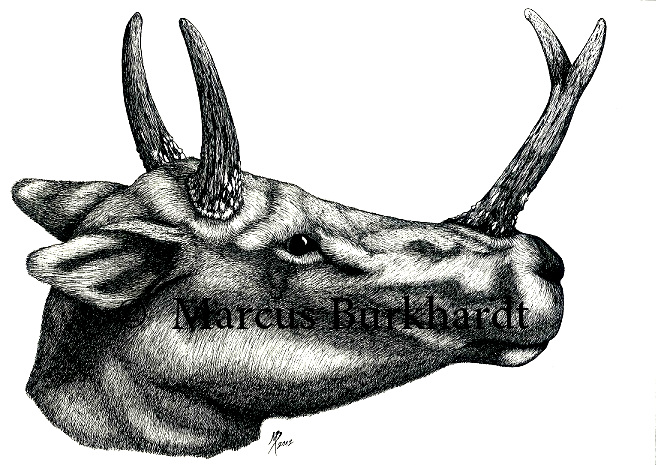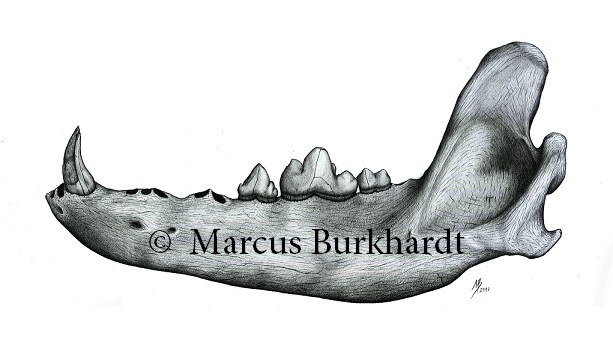![]()
Sauropelta edwardsorum & Gobiconodon ostromi, Early Cretaceous, North America
Acrylic and oil paint on canvas, 2020
40 x 30 cm
![]()
Sauropelta edwardsorum & Gobiconodon ostromi, Early Cretaceous, North America
Acrylic and oil paint on canvas, 2020
40 x 30 cm
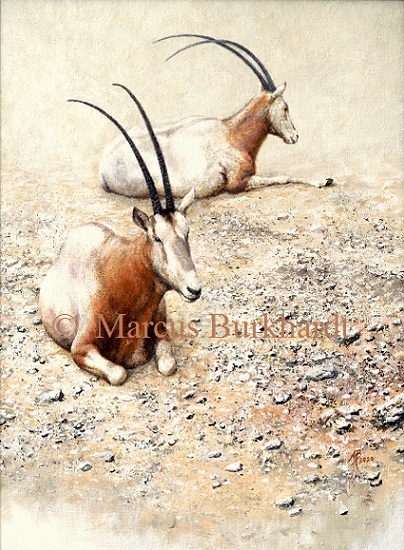
Scimitar-horned oryx (Oryx dammah)
Acrylic & oil paint on canvas, 2020
40 x 30 cm
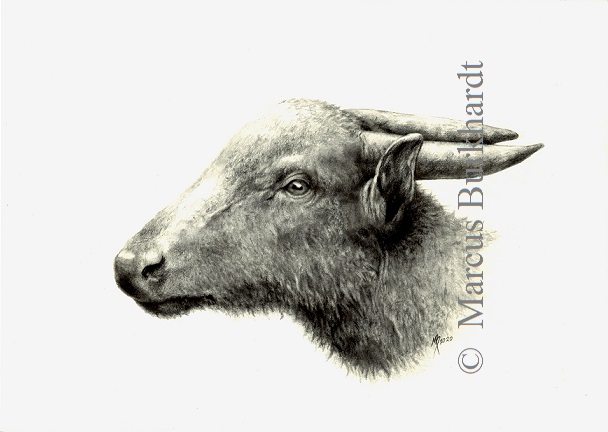
Mountain anoa (Bubalus quarlesi)
Pencil, 2020
29,5 x 21 cm
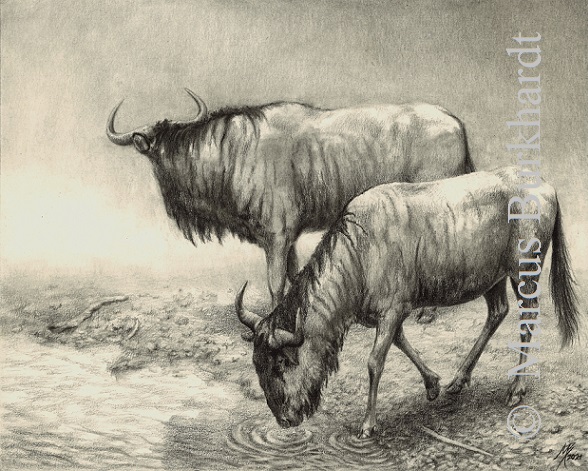
Southern blue wildebeest (Connochaetes taurinus)
Pencil, 2021
30 x 24 cm
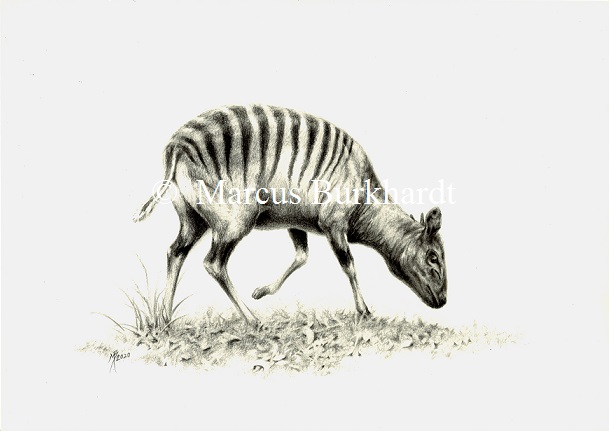
Zebra duiker (Cephalophus zebra)
Pencil, 2020
29,5 x 21 cm
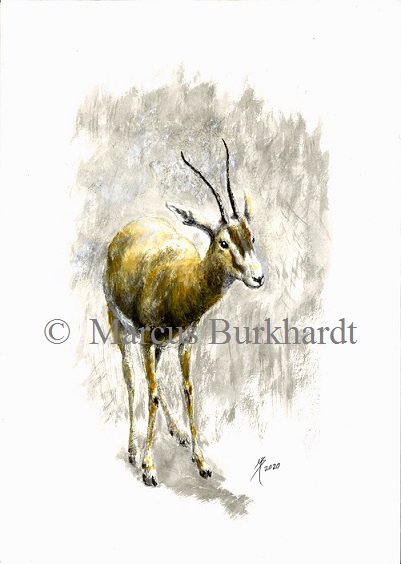
Slender horned gazelle (Gazella leptoceros)
Mixed media, 2020
24 x 17 cm
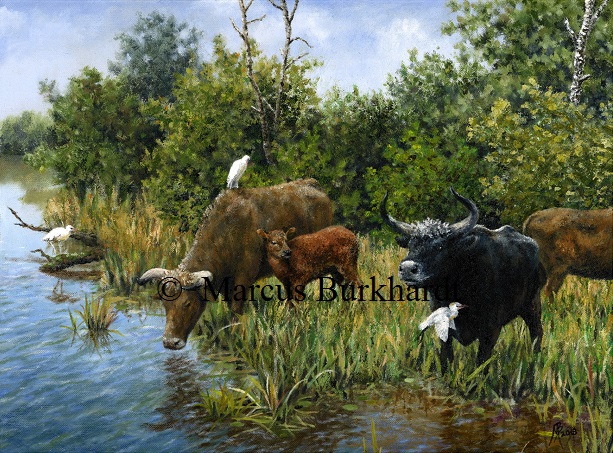
Eurasian Aurochs (Bos primigenius primigenius) with cattle egrets (Bubulcus ibis)
Oil paint on paper, 2018
40 x 30 cm
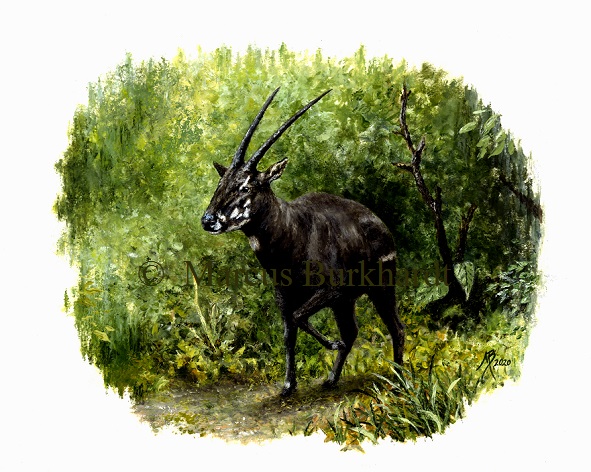
Saola (Pseudoryx nghetinhensis)
Oil paint on paper, 2020
30 x 24 cm
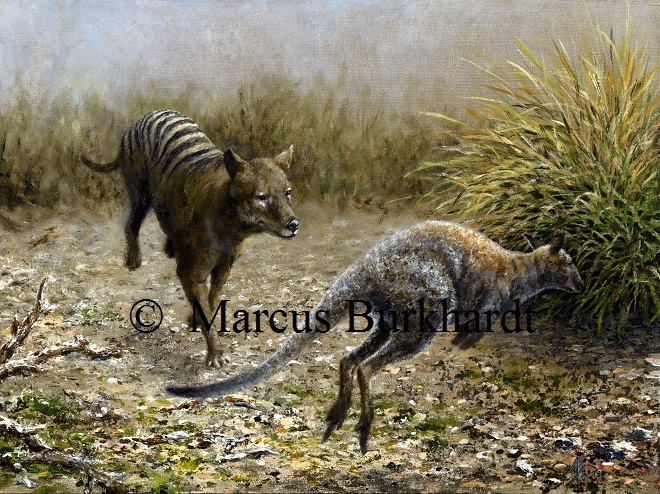
Thylacine (Thylacinus cynocephalus) & Bennett’s wallaby (Notamacropus rufogriseus fruticus)
The thylacine or Tasmanian tiger was the biggest carnivorous marsupial in historical times and was exterminated around 1900. The last individual died in 1936 at Hobart zoo.
Acrylic- & oil paint on canvas, 2019
40 x 30 cm
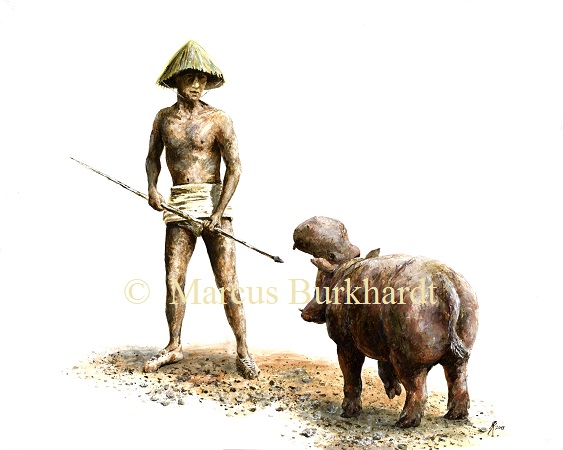
Cyprus in the Mesolithic: A man hunts a Cyprus dwarf hippopotamus (Hippopotamus minor). This was a relative to the modern hippo (Hippopotamus amphibius) and characterized by a special foot-anatomy which made it walking on just two toes per foot and was an adaption to a more terresric way of life. This specialized hippo became extinct very fast after the arrival of humans on prehistoric Cyprus.
Acrylic paint on paper, 2019
50 x 40 cm
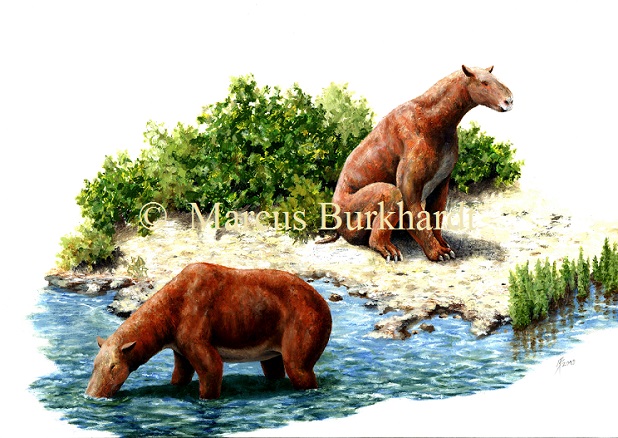
Moropus elatus (Chalicotheriidae), Miocene, North America
Oil paint on paper, 2019
42 x 29,5 cm
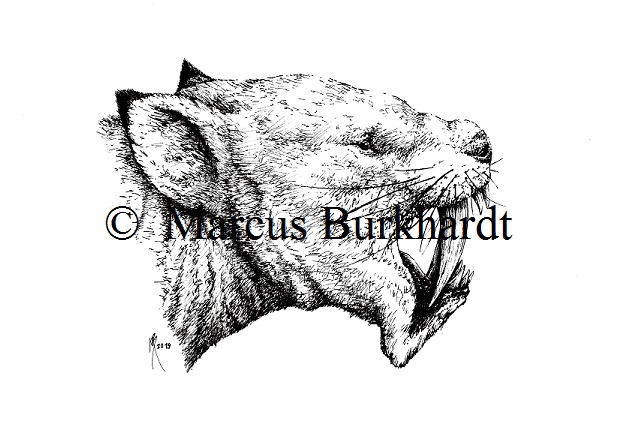
Hoplophoneus primaevus (Nimravidae), Early Oligocene, North America
Ink, 2019
29,5 x 21 cm
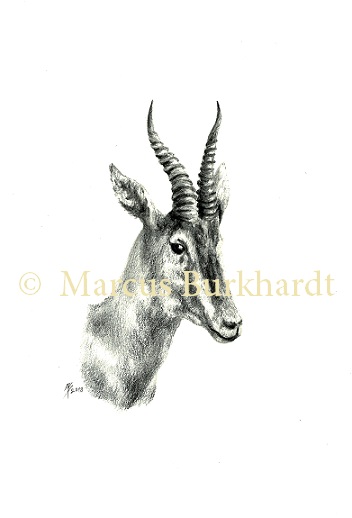
Dorcas gazelle (Gazella dorcas)
Pencil, 2018
21 x 15 cm
The picture was drawn from a zoological specimen at the natural history museum in Waldenburg.
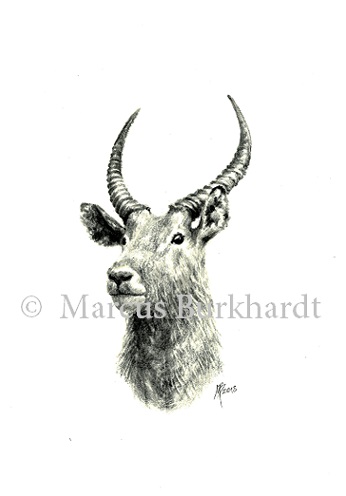
Ringed waterbuck (Kobus ellipsiprymnus)
Pencil, 2018
21 x 15 cm
The picture was drawn from a zoological specimen at the natural history museum in Waldenburg.
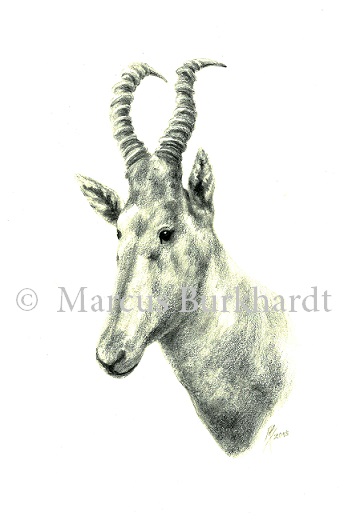
Lelwel Hartebeest (Alcelaphus lelwel), signposted at the museum as Lichtenstein’s hartebeest (Alcelaphus lichtensteinii), which is impossible because of the horn shape.
Pencil, 2018
29,5 x 21 cm
The picture was drawn from a zoological specimen at the natural history museum in Waldenburg.
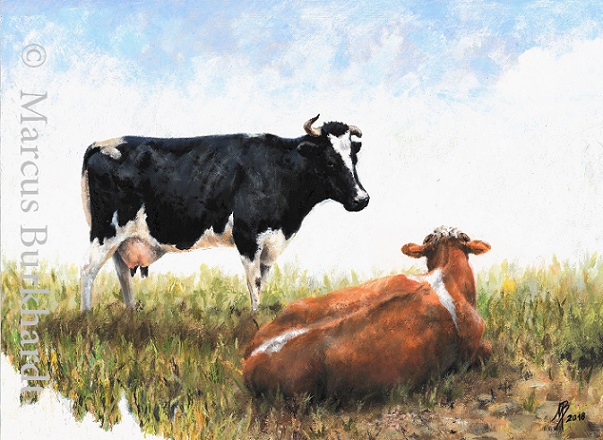
Cows on meadow
Oil paint on paper, 2018
40 x 30 cm
Private mission
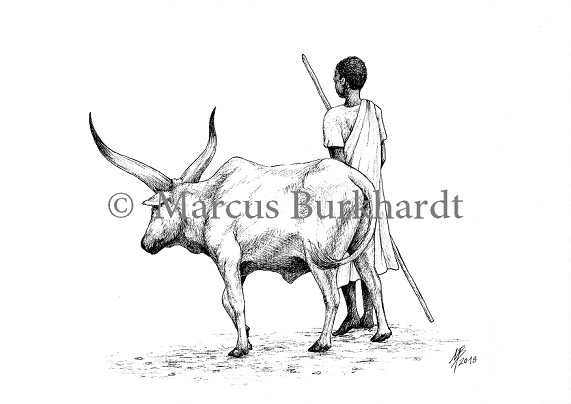
Sanga cattle
Ink, 2018
29,5 x 21 cm
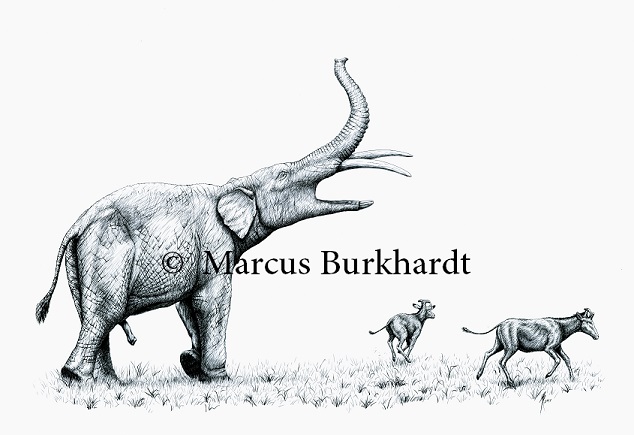
Gomphotherium angustidens (Proboscidea) & Xenokeryx amidalae (Palaeomerycidae), Miocene, Europe
Ink, 2017
100 x 70 cm
Art & Vielfalt – Impressionen aus der Tierwelt, 2018, Museum für Naturkunde Magdeburg
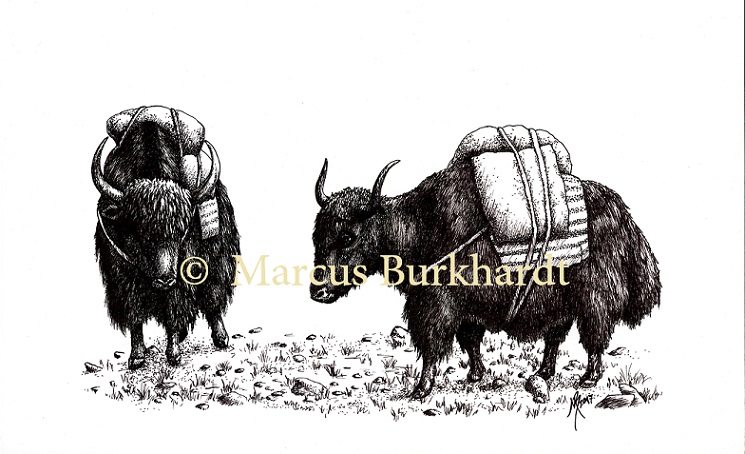
Domestic yaks (Bos grunniens)
Ink, 2017
42 x 29,5 cm
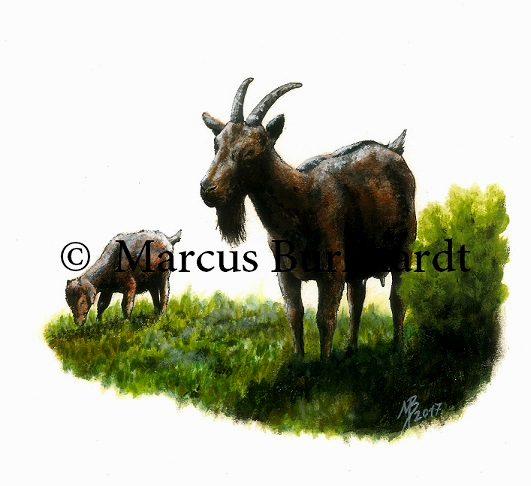
Domestic goats (Capra aegagrus hircus)
Acrylic paint on paper, 2017
32 x 24 cm
Client: Hotel “Fernmühle” in Ziegenrück
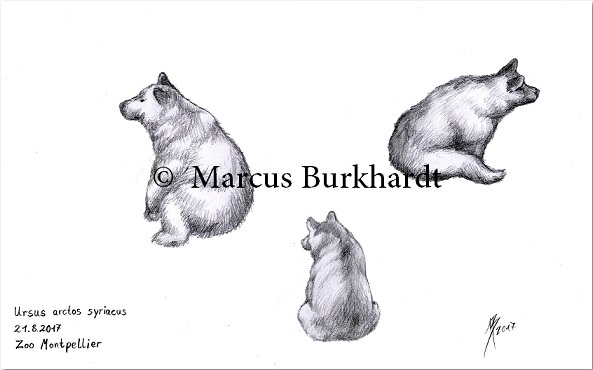
Sketches of Syrian brown bears (Ursus arctos syriacus)
Pencil, 2017
29,5 x 21 cm
The picture originated during an educational jurney to the South of France at the zoo of Montpellier.
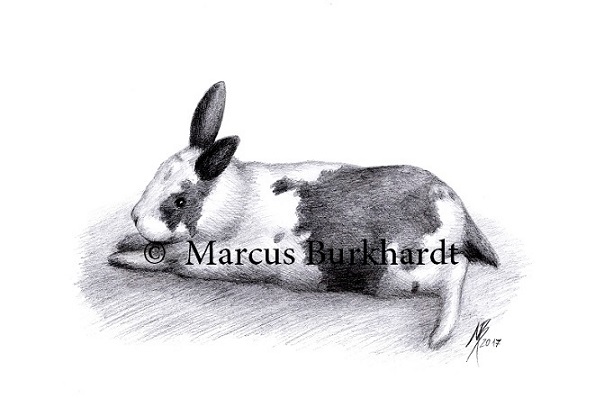
Sketch of a domestic rabbit (Oryctolagus cuniculus domestica)
Pencil, 2017
29,5 x 21 cm
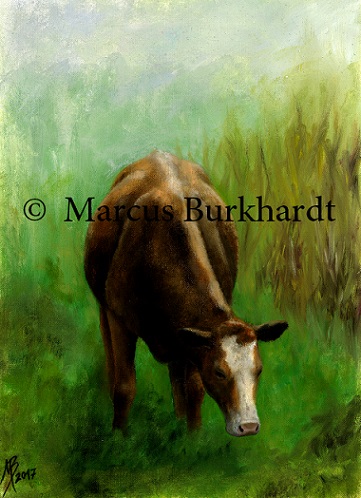
Cow on meadow
Oil paint on paper, 2017
32 x 24 cm
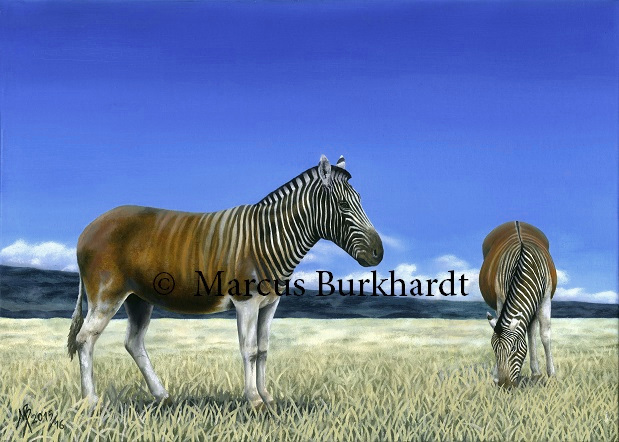
Quagga (Equus quagga quagga): An exterminated South African subspecies of plains zebra. The last one died in the Artis-Zoo in Amsterdam in 1883.
Oil on canvas, 2015/16
70 x 50 cm
Art & Vielfalt – Impressionen aus der Tierwelt, 2016, Museum für Naturkunde Magdeburg
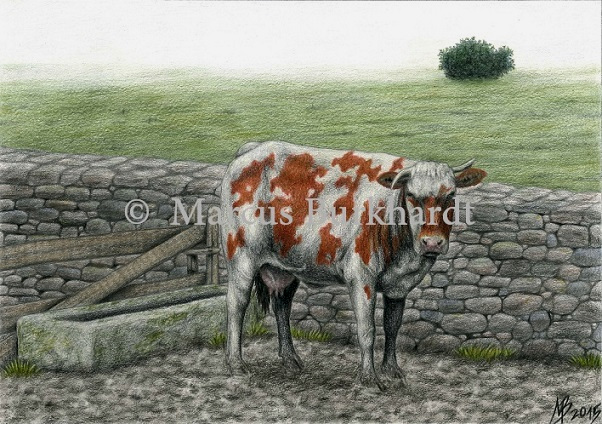
Common cattle (Bos primigenius taurus)
Coloured pencil, 2015
29,5 x 21 cm
Private mission
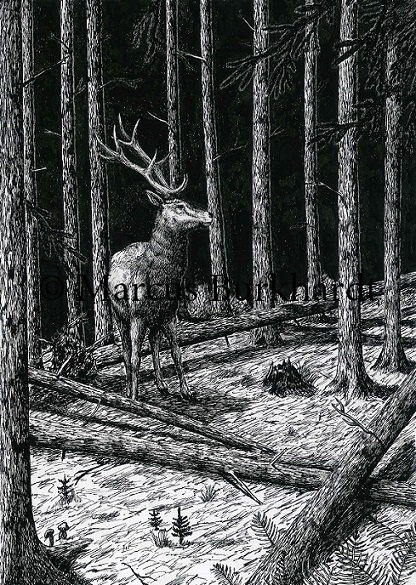
European red deer (Cervus elaphus elaphus)
Ink, 2014/16
29,5 x 21 cm
